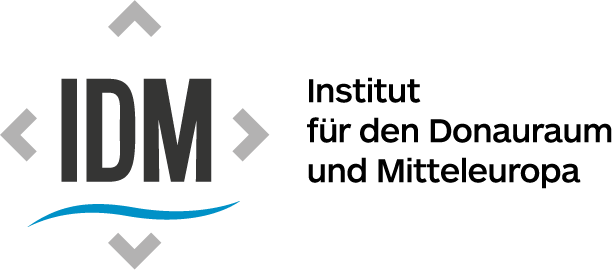
Tourismus ist gut für die Wirtschaft. Doch wenn Städte konstant überfüllt sind, kann er auch zum Fluch werden. NICOLA CAMATTI beschreibt, wie digitale Methoden zu einem nachhaltigen Tourismusmanagement in Dubrovnik beitragen.
Santorini, Venedig, Prag – diese Orte stehen ganz oben auf der Liste der beliebtesten Reiseziele in Europa. Doch trotz idyllischer Traumkulissen finden Tourist*innen oft eine ernüchternde Realität vor: lange Schlangen für das begehrte Selfie, überfüllte Straßen und Lokale sowie genervte Einheimische. Gerade Social Media machte einige lang unbekannte Plätze zu Tourismusmagneten. Das glasklare Wasser von Vlora an der Küste Albaniens oder die imposante Bergkulisse im romantischen Zakopane in Polen wurden so zu Sehnsuchtsorten der Vielen und das mit oft negativen Folgen.
Europäische Metropolen wie Paris und Barcelona werden schon lange vom Massentourismus geplagt, doch insbesondere kleinere Städte leiden unter dem Phänomen des sogenannten Overtourism (dt. Übertourismus). Laut der Welttourismusorganisation (UNWTO) beschreibt Overtourism jene Situationen, in denen der Tourismus die Lebensqualität der Einheimischen und/oder Besucher*innenerfahrungen spürbar negativ beeinflusst. Am häufigsten äußert er sich in Gentrifizierung, der Überlastung von urbaner Infrastruktur und Massenanstürmen auf maritime Reiseziele sowie einige UNESCO-Kulturerbestätten.
Reiseinfluencer*innen wurden so für einige Urlaubsorte zum Fluch. Doch Digitalisierung und Informations- und Kommunikationstechnologien können auch Teil der Lösung sein, indem sie Tourist*innenströme regulieren und den Weg für einen umweltbewussteren, sozial gerechteren und wirtschaftlich nachhaltigeren Tourismussektor ebnen. So kann beispielsweise der Einsatz intelligenter, digital betriebener Energiemanagementsysteme Ressourcen schonen. Einige Hotels regulieren somit bereits ihren Energieverbrauch, was sich positiv auf ihre Umweltbelastung auswirkt. Digitale Technologien können auch bei der Entwicklung gezielter Marketingstrategien helfen, die Tourist*innen darüber aufklären, wie sie einen Ort auf nachhaltige Weise besuchen können. Auch Einheimische können sich seit der Digitalisierung aktiver am Tourismus in ihrem Wohnort beteiligen. Über online Netzwerke entstehen gemeindebasierte Tourismusinitiativen, mithilfe derer Einwohner*innen ihr kulturelles Erbe und ihre Traditionen promoten können.
Tourismus: lieber langsam als schnell
Digitale Tools erleichtern auch das Sammeln von Daten über Besucher*innenströme, die politischen Entscheidungsträger*innen dabei helfen können, fundierte Entscheidungen für den Tourismussektor zu treffen. Von Overtourism betroffene Städte zeigen nämlich deutlich, dass Tourismus eine Grenze haben muss und es ein Maximum an Menschen gibt, die ein Reiseziel ertragen kann. In der Wissenschaft sprechen wir in dem Zusammenhang von der touristischen Tragfähigkeit. Sie stellt die Anzahl der Tourist*innen an einem bestimmten Ort in einem bestimmten Zeitraum dar, bei deren Überschreitung der Tourismus als übermäßig empfunden wird. Geschieht dies über einen längeren Zeitraum hinweg, drohen der Verlust der lokalen Identität sowie irreparable Schäden für die Umwelt. Sogar in wirtschaftlicher Hinsicht können Einheimische in solchen Fällen nicht mehr profitieren. Dies ist vor allem auf Tourist*innenströme mit begrenzter Kaufkraft zurückzuführen. Sie werden in Reisebussen oder auf Kreuzfahrtschiffen von Ort zu Ort gekarrt und versuchen alle Sehenswürdigkeiten in wenigen Stunden abzuklappern, anstatt sich lokale Delikatessen in kleinen Gastbetrieben zu gönnen, oder nachts mit Einheimischen zur Volksmusik zu tanzen. Dem gegenüber steht der langsame Tourismus mit spendablen Besucher*innen, die hochwertige Dienstleistungen schätzen und auf der Suche nach einzigartigen Erlebnissen sind.
Dubrovnik: überlaufenes Paradies
Dubrovnik, ein bekanntes Urlaubsziel im Süden Kroatiens, kämpft seit langem mit den negativen Folgen des Tourismus. Während die einheimische Bevölkerung abwandert und auf mittlerweile 41.000 Menschen schrumpfte, strömen jährlich über 1,5 Millionen Tourist*innen in die Stadt – die meisten auf die wenigen Hochsommermonate konzentriert. Doch nicht nur Mittelmeerliebhaber*innen zieht es in das malerische historische Zentrum Dubrovniks. Seit dem Erscheinen von „Game of Thrones“ pilgern auch Fans der Serie, die teilweise dort gedreht wurde, in großen Zahlen zu dem kleinen Küstenort. Das ist auch auf die übermäßige Vermarktung dieser Tatsache über digitale Plattformen zurückzuführen.
Die Belastung für die Infrastruktur und die Einwohner*innen wurde in den letzten Jahren teilweise unerträglich. Lokale Behörden reagieren daher mit verschiedenen Strategien, die darauf abzielen, die negativen Konsequenzen zu verringern und gleichzeitig auch das Erlebnis der Besucher*innen zu verbessern. Zu den Maßnahmen gehört auch der Einsatz digitaler Lösungen, wie ein Pilotprojekt zur integrierten Nutzung mobiler Anwendungen und intelligenten Überwachung der Besucher*innenströme im historischen Zentrum.
Die Pilotinitiative wurde im Rahmen des ALTER ECO PLUS Projekts unter der Leitung der Fakultät für Wirtschaftswissenschaften der Universität Ca‘ Foscari in Venedig durchgeführt. Ziel ist es, mehrere touristische Kommunikationsplattformen und mobile Anwendungen mit dem Besucher*innenzählsystem Dubrovnik Visitors zu verbinden. Diese digitale Überwachungsplattform setzt Kameras und eine intelligente Software ein, um Tourist*innenströme in Echtzeit zu erfassen und so Überbelastungen rechtzeitig zu erkennen. Mithilfe der Integration dieses Besucher*innenzählsystems mit bereits bestehenden, von Tourist*innen genutzten Apps testete die Stadt ein Benachrichtigungssystem, das Besucher*innen im Falle eines übermäßigen Zustroms von Menschen direkt über Textnachrichten alternative Attraktionen vorschlägt. Dies passierte immer dann, wenn die touristische Tragfähigkeit von 8.000 täglichen Besucher*innen im Jahr 2018 erreicht wurde.
Tourist*innen in neue Bahnen lenken
Das Pilotexperiment hat in Dubrovnik den Startschuss zu einer Trendwende gesetzt. Die Initiative hat sich weiterentwickelt, weitere touristische Dienstleistungen wie Übernachtungen und Transport integriert und ist nun Teil eines umfassenden intelligenten Tourismusmanagementplans für die Stadt. Darüber hinaus wird daran gearbeitet, dieses System auf die touristischen Angebote der ländlichen Umgebung Dubrovniks zu erweitern. Die Webplattform „Rural Dubrovnik-Neretva“ hat mehr als 80 agrartouristische Orte digital vernetzt und fördert damit unzählige Restaurants, Weinkeller, Geschäfte, ländliche Unterkünfte, Souvenirläden, 15 Veranstaltungen und sieben thematische Wanderwege in der Region nördlich von Dubrovnik. Diese könnten als Alternative empfohlen werden, sobald die historische Altstadt überlastet ist.
Tourismus bringt immer negative Auswirkungen mit sich, aber er kann eine Stadt regelrecht vergiften, wenn die Zahl der Besucher*innen die Grenze der touristischen Tragfähigkeit überschreitet. Jegliche Vorteile des Tourismus können die Nachteile dann nicht mehr ausgleichen. Das Beispiel Dubrovnik macht deutlich, wie digitale Tools zu mehr Nachhaltigkeit, positiver Tourismusentwicklung und der kulturellen Aufwertung von Städten und Regionen führen kann, wenn sie richtig eingesetzt werden.
Nicola Camatti ist Forscher an der Universität Ca‘ Foscari in Venedig. Seine Forschung konzentriert sich auf nachhaltige Tourismusplanung und regionale Entwicklung.
































